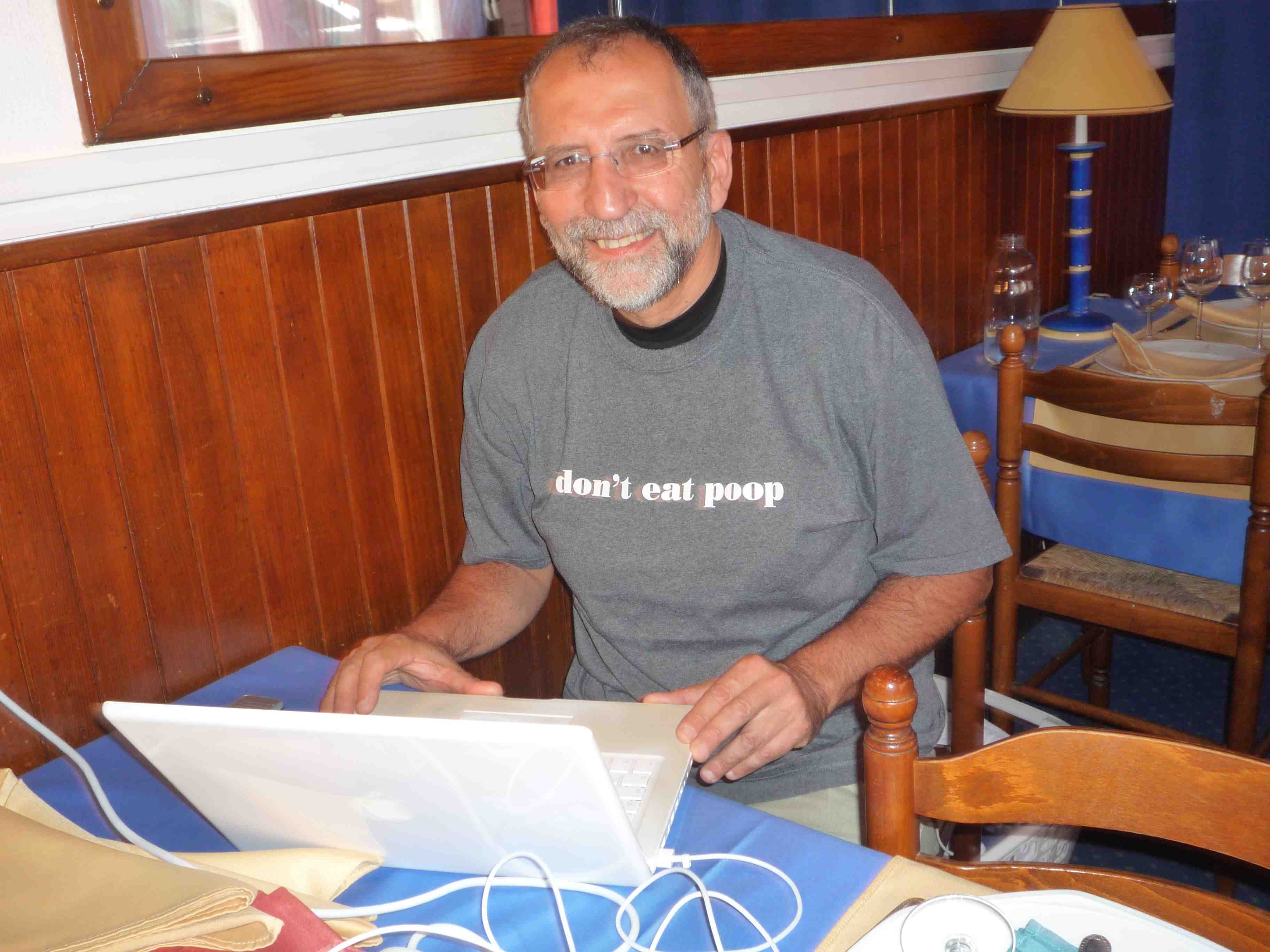It matters what’s done after people barf. Same if people have diarrhea – in a pool.
During the summer of 2007, almost 6,000 people in Utah started barfing from Cryptosporidium, transmitted via the barfblog fav, fecal-oral route
The U.S. Centers for Disease Control reports that of 1,506 interviewed patients with laboratory-confirmed cryptosporidiosis, 1,209 (80%) reported swimming in at least one of approximately 450 recreational water venues during their potential 14-day incubation period.
Cryptosporidium is extremely chlorine-tolerant, and secondary or supplemental disinfection with ultraviolet light or ozone can control but not prevent outbreaks. Because swimmers are the primary source of Cryptosporidium contamination, healthy swimming campaigns are needed to increase awareness and practice of healthy swimming behaviors, especially not swimming while .jpg) ill with diarrhea (i.e., swimming while ill with diarrhea can lead to gross contamination of recreational water). Before the 2008 summer swimming season, Utah public health agencies launched a multimedia healthy swimming campaign. To assess knowledge of healthy swimming, a survey of Utah residents was conducted during July–September 2008. The results of that survey found that 96.1% of respondents correctly indicated that "it is not OK to swim if you have diarrhea."
ill with diarrhea (i.e., swimming while ill with diarrhea can lead to gross contamination of recreational water). Before the 2008 summer swimming season, Utah public health agencies launched a multimedia healthy swimming campaign. To assess knowledge of healthy swimming, a survey of Utah residents was conducted during July–September 2008. The results of that survey found that 96.1% of respondents correctly indicated that "it is not OK to swim if you have diarrhea."
In a separate national survey in 2009, 100% of Utah residents but only 78.4% of residents of other states correctly indicated that "not swimming while ill with diarrhea protects others from recreational water illnesses (RWIs)." No recreational water–associated outbreaks were detected in Utah during 2008–2011. The healthy swimming campaign, as part of a multipronged prevention effort, might have helped prevent recreational water–associated outbreaks of cryptosporidiosis in Utah.
Before the 2008 summer swimming season, Utah’s state and local public health agencies teamed with community partners to control recreational water–associated transmission of Cryptosporidium. For example, the Salt Lake Valley Health Department (SLVHD) collaborated with pool operators to establish fecal incident–response protocols and install secondary or supplement disinfection systems to inactivate Cryptosporidium at 75 treated recreational water venues.
SLVHD also collaborated with the Utah Department of Health and diagnostic laboratories to expedite reporting of cryptosporidiosis cases to public health authorities. To engage the public in prevention, SLVHD led efforts to disseminate healthy swimming messages via a website, two .jpg) television advertisements, public service radio announcements, and posters at pools (e.g., "A Swimming Pool is Like a Community Bathtub"). In addition, targeted messages were disseminated to schools, competitive water sports teams, and licensed childcare facilities. SLVHD also conducted a press conference during Recreational Water Illness and Injury Prevention Week, which is held each year the week before the Memorial Day holiday.
television advertisements, public service radio announcements, and posters at pools (e.g., "A Swimming Pool is Like a Community Bathtub"). In addition, targeted messages were disseminated to schools, competitive water sports teams, and licensed childcare facilities. SLVHD also conducted a press conference during Recreational Water Illness and Injury Prevention Week, which is held each year the week before the Memorial Day holiday.
The complete report is available at http://www.cdc.gov/mmwr/preview/mmwrhtml/mm6119a5.htm?s_cid=mm6119a5_x.

 year. In Thanksgivings past, socializing meant gathering with friends, family, loved ones and straggler students to share good food and good times. These days, being social around the holiday dinner table also takes on the meaning of regularly corresponding to all and sundry (a.k.a. our extended friends) about the food, the people, the football game, and the current goings on.
year. In Thanksgivings past, socializing meant gathering with friends, family, loved ones and straggler students to share good food and good times. These days, being social around the holiday dinner table also takes on the meaning of regularly corresponding to all and sundry (a.k.a. our extended friends) about the food, the people, the football game, and the current goings on..jpg) exemplars – personal examples to get people’s attention. Chapman dug into the literature and found references going back decades.
exemplars – personal examples to get people’s attention. Chapman dug into the literature and found references going back decades..jpg) 2006 more than 150 food safety infosheets have been produced. They are available for download at no cost. The website has been recently redesigned, adding a search function, automatic e-mail alerts and RSS feeds. The new database is also sortable by pathogen, location and risk factor.
2006 more than 150 food safety infosheets have been produced. They are available for download at no cost. The website has been recently redesigned, adding a search function, automatic e-mail alerts and RSS feeds. The new database is also sortable by pathogen, location and risk factor. last year
last year not a French word. By comparison, the U.S. Congress passed a law on the freedom of information that requires the administration to establish clear standards to determine what documents can be classified as confidential, secret or top-secret, allowing citizens the right to challenge these classifications in court.
not a French word. By comparison, the U.S. Congress passed a law on the freedom of information that requires the administration to establish clear standards to determine what documents can be classified as confidential, secret or top-secret, allowing citizens the right to challenge these classifications in court..jpeg) write it down. Bureaucrat 101 – write it down, have to do it; so don’t write it down.
write it down. Bureaucrat 101 – write it down, have to do it; so don’t write it down. The salami is sold by Siena Foods based in Toronto and was voluntarily recalled by the manufacturer on Dec. 21, 2009, the Canadian Food Inspection Agency said Wednesday. The best before date on the packaged meat is May 4, 2010.
The salami is sold by Siena Foods based in Toronto and was voluntarily recalled by the manufacturer on Dec. 21, 2009, the Canadian Food Inspection Agency said Wednesday. The best before date on the packaged meat is May 4, 2010. People often ask Amy, “Why are you with Doug?”
People often ask Amy, “Why are you with Doug?” The listserv is designed to:
The listserv is designed to: The Vancouver Sun reports
The Vancouver Sun reports As The Washington Post reports this morning
As The Washington Post reports this morning